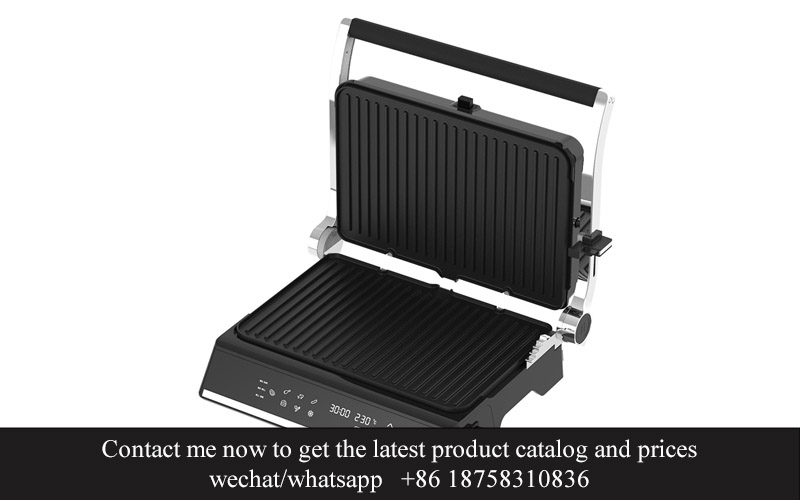Address
304 North Cardinal
St. Dorchester Center, MA 02124
Work Hours
Monday to Friday: 7AM - 7PM
Weekend: 10AM - 5PM
Address
304 North Cardinal
St. Dorchester Center, MA 02124
Work Hours
Monday to Friday: 7AM - 7PM
Weekend: 10AM - 5PM

In an era where technological advancements and changing consumer preferences are reshaping the landscape of various industries, the kitchen appliance sector stands as a testament to innovation and transformation. As homeowners seek not just functionality but also elegance and sustainability, the role of import substitution suppliers becomes increasingly significant. This article explores the intricate dynamics of the European and American kitchen appliance markets, highlighting the impact of innovative product ideas, the value of market trends and data analysis, and the pivotal role of import substitution suppliers in shaping the industry’s future. We delve into case studies of successful import substitution, dissect the challenges and opportunities faced by manufacturers, and conclude by reflecting on the path forward, hand in hand with import substitution partners.
The Rise of Import Substitution in Kitchen Appliances
In recent years, the kitchen appliance industry has witnessed a significant shift towards import substitution. This trend, which involves producing goods domestically that were previously imported, has become a cornerstone of economic strategy in many regions. The reasons for this rise are multifaceted, ranging from cost savings to national pride and the drive for self-sufficiency.
One of the primary drivers of import substitution in kitchen appliances is the desire to reduce dependence on foreign suppliers. This is particularly true in Europe and the United States, where consumers are increasingly looking for locally produced goods. The global supply chain disruptions, especially those highlighted by the COVID-19 pandemic, have underscored the importance of having a robust domestic manufacturing base.
Cost savings are another key factor. By producing appliances domestically, companies can cut down on transportation costs and reduce the risks associated with international trade. Additionally, local production can often be more cost-effective due to lower labor costs and better supply chain management.
National pride also plays a role in the rise of import substitution. There is a growing sentiment that supporting local manufacturers contributes to the country’s economic strength and cultural identity. This has led to government incentives and policies that encourage domestic production, often in collaboration with local suppliers.
The technological advancements in manufacturing have also made import substitution more feasible. Modern production techniques and automation have significantly reduced the barriers to entry for new players in the kitchen appliance market. This has allowed smaller, local firms to compete with larger, established international brands.
Moreover, the consumer preference for energy-efficient and sustainable appliances has created a niche for import substitution. Local manufacturers can tailor their products to meet the specific needs and preferences of the domestic market, including environmental concerns and health and safety standards.
In Europe, the trend towards import substitution is particularly pronounced. Countries like Germany, Italy, and the United Kingdom have seen a surge in domestic appliance production. This is partly due to the strong legacy of manufacturing in these regions, but also because of the emphasis on innovation and quality that European consumers demand.
In the United States, the trend is driven by a combination of factors, including the “Buy American” movement and the need for more energy-efficient appliances. American consumers are increasingly seeking appliances that are not only made in the USA but also contribute to the nation’s energy independence.
The role of import substitution suppliers in this landscape cannot be overstated. These suppliers provide the necessary components and parts to local manufacturers, ensuring that the production process is efficient and cost-effective. They also often contribute to the development of new technologies and manufacturing processes, further enhancing the competitiveness of domestic appliances.
In conclusion, the rise of import substitution in the kitchen appliance industry is a multifaceted phenomenon. It is driven by economic, cultural, and technological factors, and it has significant implications for both manufacturers and consumers. As the industry continues to evolve, the importance of local suppliers and the role they play in shaping the market will only grow.

The European and American kitchen appliance industries have long been at the forefront of innovation and consumer demand. With a rich tapestry of brands and a diverse range of products, these markets offer a glimpse into the future of smart and efficient home cooking solutions.
In Europe, the kitchen appliance market is characterized by a strong emphasis on design, functionality, and sustainability. Countries like Germany, Italy, and the UK are known for their high-quality appliances that cater to both domestic and professional users. German brands, in particular, are synonymous with precision engineering and reliability, with products like Miele and Siemens dominating the market. Italian brands, on the other hand, bring a touch of elegance and artistry to the kitchen, with companies like Smeg and Gaggenau offering a blend of classic and modern aesthetics.
The American market, while sharing some similarities with Europe, also has its unique traits. The U.S. is a leader in the adoption of smart kitchen appliances, with a growing trend towards integration with home automation systems. Brands like Whirlpool, KitchenAid, and GE have been at the forefront of this shift, offering a range of appliances that not only perform well but also connect to smartphones and other devices for remote control and monitoring. The American consumer is also highly brand-conscious, with a preference for well-known names that offer a sense of trust and quality.
Both regions have seen a surge in the popularity of kitchen appliances that focus on energy efficiency. As environmental concerns grow, manufacturers are increasingly incorporating eco-friendly features into their products, such as energy-saving modes and water-saving technologies. This shift is not only driven by consumer demand but also by regulatory requirements that are becoming more stringent in both Europe and the U.S.
In Europe, the kitchen appliance industry is also influenced by cultural differences. For instance, in countries like France and Spain, there’s a strong emphasis on the social aspect of cooking, with appliances often designed to facilitate communal dining experiences. Conversely, in the UK, there’s a preference for compact and space-saving appliances, reflecting the smaller living spaces and the busy lifestyles of many British consumers.
In the U.S., the kitchen remains a hub for culinary exploration, with a plethora of appliances designed to cater to both the professional chef and the home enthusiast. From high-end ranges and ovens to state-of-the-art refrigerators and dishwashers, American kitchens are equipped with the latest technology to enhance cooking experiences and simplify everyday tasks.
The European and American markets also differ in terms of distribution channels. In Europe, there’s a mix of large retail chains, specialized kitchen appliance stores, and online sales platforms. The U.S. market, while similar, also includes a significant number of independent appliance stores and a strong online presence, with e-commerce platforms playing a crucial role in reaching consumers.
Moreover, both markets are witnessing a trend towards customization and personalization. Consumers are no longer satisfied with one-size-fits-all solutions; they seek appliances that can be tailored to their specific needs and preferences. This has led to a rise in modular kitchen appliances and customizable features, allowing users to create a kitchen that reflects their individual style and cooking habits.
In conclusion, the European and American kitchen appliance industries are dynamic and diverse, each with its own unique strengths and trends. Whether it’s the precision engineering of German appliances, the sleek design of Italian models, or the cutting-edge technology of American brands, these markets continue to push the boundaries of what’s possible in the kitchen.

In the ever-evolving kitchen appliance sector, innovation is the cornerstone of progress. Brands are continuously pushing boundaries to create products that not only enhance efficiency but also cater to the modern consumer’s desire for convenience, sustainability, and aesthetics. Here are some innovative product ideas that are shaping the future of kitchen appliances:
Kitchen appliances are becoming an integral part of the smart home ecosystem. Imagine a refrigerator that can not only keep your food fresh but also order groceries automatically when supplies run low. Smart ovens with built-in cameras and recipe recommendations can guide you through cooking complex dishes, making even the most inexperienced chefs feel like a pro.
Sustainability is a growing concern, and the kitchen appliance industry is responding with eco-friendly designs. Appliances with energy-saving modes, LED lighting, and materials that are recyclable or biodegradable are becoming standard. Innovative ideas include solar-powered countertop mixers and induction cooktops that use less energy than traditional electric or gas models.
User interfaces are evolving to be more interactive and personalized. Touchscreens, voice command technology, and even augmented reality (AR) are being integrated into appliances. A refrigerator that doubles as a digital pantry, where you can see the contents and even shop directly from the screen, is not just a dream but a feasible concept.
In cities where space is at a premium, compact kitchen appliances are a necessity. Multifunctional units like a single countertop that combines a blender, food processor, and coffee maker can save valuable counter space. Rolling appliances on casters and foldable countertop cooktops are also popular for those with limited kitchen area.
As health consciousness grows, so does the demand for kitchen appliances that support a healthy lifestyle. Appliances with built-in air filtration systems, steam cooking options to retain nutrients, and timers that encourage cooking sessions for a certain number of minutes to maximize nutrient absorption are examples of this trend.
Consumers are looking for appliances that can be tailored to their needs. Modular designs that allow for the addition of new components or the removal of unnecessary ones can provide flexibility. Imagine a modular oven that can start as a standard range and then expand with a rotisserie attachment or a convection setting.
The next level of innovation is the integration of artificial intelligence into kitchen appliances. Smart cookers that learn your preferences and adjust their settings accordingly, or even a smart rice cooker that can tell you when to add the water based on the type of rice you’re cooking, are just a glimpse into the future.
Safety has always been a priority, but new technologies are making appliances even safer. Sensors that prevent burns, child-proof locks, and automatic shut-offs in case of an overheating situation are becoming standard. Additionally, appliances with anti-slip bases and wireless connectivity to monitor usage and alert homeowners to potential issues are gaining popularity.
Appliances that can adapt to different types of cookware and surfaces are becoming more common. Cooktops that detect the size of the pot or pan you’re using and adjust the heat accordingly, or ovens that can tell you the optimal cooking temperature for your specific dish, are examples of this technology.
As the kitchen appliance sector continues to innovate, the possibilities for new product ideas are virtually limitless. Consumers are eager for appliances that can not only simplify their lives but also enhance their cooking experiences and contribute to a more sustainable world.

Understanding market trends and conducting thorough data analysis is a cornerstone for the success of any industry, and the kitchen appliance sector is no exception. Here’s a delve into why these practices are pivotal:
In the ever-evolving landscape of kitchen appliances, staying abreast of market trends is akin to navigating a complex maze. Consumers’ preferences, technological advancements, and economic shifts all play a role in shaping the direction of the industry. By keeping a pulse on these trends, companies can anticipate changes and adapt their strategies accordingly.
For instance, the growing trend towards sustainability has seen an upsurge in eco-friendly appliances. Smart kitchen gadgets, once a novelty, are now mainstream, offering users convenience and connectivity. Data analysis helps in pinpointing these shifts, allowing manufacturers to capitalize on new opportunities.
Data analysis is not just about identifying trends; it’s also about understanding the nuances behind them. By analyzing customer purchase patterns, appliance manufacturers can tailor their offerings to meet specific needs. This could mean anything from incorporating voice-activated controls to enhancing energy efficiency, all based on the data-driven insights gathered.
Market trends and data analysis also play a crucial role in the pricing strategies of kitchen appliance suppliers. By understanding the price sensitivity of consumers, companies can adjust their pricing models to remain competitive without compromising on quality. For example, a surge in demand for budget-friendly appliances might necessitate the development of cost-effective models that still deliver on performance.
Innovation is a driving force in the kitchen appliance sector, and market trends and data analysis are the compasses that guide this innovation. By knowing what consumers are looking for, companies can invest in research and development (R&D) more effectively. This means focusing on features that will resonate with the target market, whether it’s the latest in smart technology or the timeless appeal of classic designs.
The integration of technology into kitchen appliances has been a game-changer. Data analysis helps in understanding how consumers interact with these technologies, ensuring that the user experience is seamless and intuitive. For example, the popularity of apps that control kitchen appliances remotely has soared, and manufacturers are responding with more sophisticated, user-friendly interfaces.
Moreover, market trends and data analysis are instrumental in identifying potential risks and challenges. By predicting market saturation or the entry of new competitors, companies can prepare accordingly. This might involve diversifying their product lines, strengthening their brand presence, or even exploring new markets.
In the realm of supply chain management, the insights gained from market trends and data analysis are invaluable. Companies can optimize their production schedules, manage inventory more efficiently, and reduce costs. This is particularly important in a sector where raw material prices and availability can fluctuate dramatically.
Lastly, the role of market trends and data analysis in regulatory compliance cannot be overstated. With new regulations emerging around energy efficiency and safety, staying informed and adapting products to meet these standards is essential. Data-driven analysis can help companies stay ahead of the curve, ensuring they remain compliant without sacrificing innovation.
In summary, the kitchen appliance sector thrives on the insights provided by market trends and data analysis. It’s through this lens that companies can forecast future demand, innovate effectively, manage risks, and ultimately, deliver products that resonate with the consumer of today and tomorrow.

In the evolving landscape of the kitchen appliance sector, import substitution suppliers play a pivotal role in reshaping the market dynamics. These suppliers offer a range of benefits that extend beyond mere cost savings, influencing the market in several profound ways.
Their impact is often seen in the localization of products, which can lead to a better understanding of local needs and preferences. By producing appliances that are tailored to the specific requirements of a region, import substitution suppliers can address unique challenges and opportunities that global brands might overlook. This localization can result in appliances that are not just efficient but also culturally relevant, making them more appealing to consumers.
The rise of import substitution suppliers also fosters innovation within the market. When domestic manufacturers are encouraged to compete with international brands, they are motivated to develop new technologies and design solutions. This competitive spirit can lead to the creation of products that are not only cost-effective but also highly efficient, offering consumers a wider array of choices.
Moreover, import substitution suppliers contribute to the reduction of trade imbalances. By sourcing components and manufacturing locally, these suppliers help to circulate capital within the domestic economy. This can have a ripple effect, supporting local businesses and creating jobs, thus strengthening the overall economic fabric of the region.
In terms of sustainability, import substitution suppliers are often at the forefront of eco-friendly practices. With environmental concerns on the rise, these suppliers are increasingly adopting green manufacturing processes and incorporating energy-efficient technologies into their products. This not only aligns with global sustainability goals but also addresses the growing demand for eco-conscious appliances among consumers.
The role of import substitution suppliers in shaping the market is further highlighted by their ability to adapt to regulatory changes. Local manufacturers are often more agile and better equipped to comply with evolving safety standards and certifications. This agility ensures that the market remains dynamic and responsive to legislative requirements, which can be a significant barrier for foreign companies.
Additionally, import substitution suppliers often focus on after-sales service and customer support. By providing comprehensive service packages, they build trust and loyalty among consumers. This dedication to customer satisfaction can lead to higher retention rates and positive word-of-mouth, which in turn drives market growth.
In the realm of technology integration, import substitution suppliers are at the cutting edge. They are quick to incorporate smart features and connectivity into their appliances, reflecting the broader trend towards the Internet of Things (IoT). This not only enhances the user experience but also opens up new revenue streams through data analytics and personalized services.
The competitive pricing offered by import substitution suppliers is another key factor in shaping the market. By leveraging economies of scale and local sourcing, these suppliers can offer appliances at a lower cost without compromising on quality. This affordability makes kitchen appliances more accessible to a broader segment of the population, thereby expanding the market reach.
In conclusion, the role of import substitution suppliers in shaping the kitchen appliance market is multifaceted. From driving innovation and localization to supporting sustainability and economic growth, their impact is significant and continues to evolve as consumer needs and technological advancements change. As the market continues to mature, the influence of these suppliers is likely to grow, further diversifying the landscape of kitchen appliances.

In the realm of kitchen appliance innovation, several case studies stand out as shining examples of successful import substitution. These stories showcase how local suppliers have stepped up to the plate, leveraging their resources and creativity to meet the demands of their markets.
Consider the case of “EcoGadgets,” a small, family-owned company in Germany. Once reliant on imported appliances, they noticed a growing consumer preference for eco-friendly products. Seizing the opportunity, EcoGadgets developed a line of energy-efficient kitchen appliances that were not only sustainable but also cost-effective. The result? A surge in demand and a strong position in the market, reducing the need for foreign imports.
Another instance is the rise of “LocalKitch” in the United States. This company focused on a niche market: smart kitchen appliances tailored to the needs of busy professionals. By integrating cutting-edge technology with user-friendly designs, LocalKitch managed to capture a significant share of the market. Their appliances were not only smart but also supported local jobs and manufacturing, thus promoting import substitution.
In Italy, “CucinaMadeIn” faced the challenge of high import costs for kitchenware. They turned this challenge into an opportunity by creating a line of high-quality, locally produced kitchen utensils. The brand quickly gained traction due to its affordability and the pride it instilled in Italian consumers. By offering a superior local alternative, CucinaMadeIn effectively diminished the need for imported goods.
In Spain, “SaborLocal” focused on the growing demand for health-conscious appliances. They introduced a range of kitchen gadgets designed to help consumers prepare nutritious meals at home. By emphasizing the importance of local produce and sustainability, SaborLocal not only filled a market gap but also contributed to the local economy.
In France, “CuisinArtisan” capitalized on the country’s culinary heritage. They produced artisanal kitchen appliances that were both functional and beautiful, appealing to those who valued craftsmanship. By offering a blend of traditional and modern designs, CuisinArtisan was able to carve out a niche market that preferred local over imported goods.
The success of these companies underscores the importance of understanding market needs and adapting to them. By focusing on quality, innovation, and local pride, they were able to create products that resonated with consumers and reduced the reliance on imports.
EcoGadgets, for example, recognized the shift towards sustainability and responded with products that aligned with this trend. They not only addressed the environmental concerns but also created a brand that customers could feel good about supporting.
LocalKitch’s approach was to cater to the tech-savvy demographic, offering smart appliances that made cooking easier and more efficient. Their understanding of the market’s desire for convenience and innovation allowed them to create a product that was both desirable and accessible.
CucinaMadeIn’s strategy was to offer a product that was both affordable and of high quality, appealing to a broad consumer base. By focusing on local manufacturing, they were able to provide a product that was both accessible and supported the local economy.
SaborLocal’s success was rooted in their focus on health and wellness, addressing a growing trend in the market. By promoting the use of local ingredients and sustainable practices, they were able to create a product that was not only beneficial to the consumer’s health but also to the local community.
CuisinArtisan’s approach was to blend tradition with modern functionality, creating a product that was both aesthetically pleasing and practical. Their understanding of the market’s appreciation for craftsmanship and local culture allowed them to create a product that was both unique and sought after.
Each of these case studies demonstrates how companies can successfully implement import substitution strategies. By focusing on market needs, leveraging local resources, and fostering a sense of pride in local products, these companies have not only reduced their reliance on imports but also strengthened their position in the market. Their stories serve as inspiration for other businesses looking to follow in their footsteps and contribute to the growth of the domestic kitchen appliance sector.

In the ever-evolving kitchen appliance sector, manufacturers face a myriad of challenges and opportunities that can significantly impact their growth and sustainability. Adapting to changing consumer demands, technological advancements, and market dynamics is crucial for success.
The competition in the kitchen appliance market is fierce, with established brands vying for market share alongside emerging players. Consumers are increasingly looking for smart, energy-efficient, and customizable appliances that not only enhance their cooking experience but also integrate seamlessly into their homes. This shift requires manufacturers to innovate and invest in research and development (R&D) to stay ahead.
One of the major challenges is the rapid pace of technological change. New features and functionalities are introduced almost daily, pushing manufacturers to keep up with the latest trends. For instance, the integration of IoT (Internet of Things) technology in kitchen appliances has opened up a whole new world of possibilities, from remote control and monitoring to personalized cooking recommendations. However, the cost of incorporating these advanced technologies can be prohibitive, especially for smaller manufacturers.
Energy efficiency is another critical challenge. As environmental concerns grow, consumers are more likely to choose appliances that are energy-saving and have a lower carbon footprint. This not only requires manufacturers to design more efficient appliances but also to comply with increasingly stringent energy regulations in various regions. The balance between innovation and compliance can be a delicate one.
The global supply chain disruptions of recent years have also posed significant challenges. Delays, shortages, and increased costs have affected the production and delivery of kitchen appliances. Manufacturers must find ways to mitigate these risks, whether through diversifying their supply chains or by developing in-house capabilities.
Despite these challenges, there are numerous opportunities for kitchen appliance manufacturers. The growing middle class in developing countries is creating a surge in demand for modern kitchen appliances. This demographic shift presents an opportunity to expand into new markets and cater to a broader consumer base.
Smart kitchen technology is a rapidly growing segment that offers immense potential. As consumers become more tech-savvy, they are looking for appliances that can connect to their smartphones or other devices, providing them with convenience and control. This opens doors for manufacturers to create innovative solutions that cater to the digital lifestyle.
Sustainability is also an opportunity. Manufacturers that can produce eco-friendly appliances, use recycled materials, or offer energy-efficient products are likely to gain a competitive edge. Consumers are increasingly willing to pay a premium for sustainable products, making this a viable business strategy.
Another opportunity lies in the customization of kitchen appliances. As consumers seek unique and personalized products, manufacturers can offer customized designs, finishes, and features. This not only allows for differentiation in a crowded market but also fosters a stronger connection with the customer.
The rise of e-commerce has changed the landscape of kitchen appliance sales. Online platforms provide manufacturers with direct access to consumers, reducing the need for traditional retail channels. This shift allows for more targeted marketing and the ability to quickly adapt to market trends.
Lastly, partnerships and collaborations can be a powerful tool. By teaming up with other companies, such as software developers or home automation specialists, manufacturers can create integrated solutions that offer added value to customers.
In conclusion, while the kitchen appliance manufacturing industry faces numerous challenges, it also presents a wealth of opportunities. By embracing innovation, focusing on sustainability, and adapting to the changing market dynamics, manufacturers can navigate these challenges and capitalize on the opportunities available to them.

Embracing the Future with Import Substitution Partners, the kitchen appliance industry is witnessing a transformative shift. As manufacturers navigate this changing landscape, they must adapt to new challenges and capitalize on emerging opportunities. Here’s a closer look at what lies ahead.
The market for kitchen appliances is evolving rapidly, driven by consumer demands for energy efficiency, smart technology, and sustainability. As a result, manufacturers are under pressure to innovate and keep up with these shifting trends. Import substitution, a strategy that promotes domestic production over foreign imports, plays a pivotal role in this evolution.
One challenge faced by kitchen appliance manufacturers is the need to balance cost and quality. Consumers are increasingly price-sensitive, yet they expect high-quality products that meet their expectations. Import substitution can help mitigate this challenge by providing a more cost-effective alternative without compromising on quality.
Moreover, the rise of e-commerce has expanded the market reach for kitchen appliances, allowing manufacturers to tap into new demographics and regions. However, this expansion also brings about competition from both domestic and international brands. Import substitution suppliers can offer a competitive edge by providing local manufacturers with the necessary components and expertise to meet the demands of the market.
Innovation is another key driver for kitchen appliance manufacturers. The industry is witnessing a surge in smart appliances that offer connectivity, automation, and enhanced user experiences. To stay ahead, manufacturers must invest in research and development to create cutting-edge products that resonate with consumers. Import substitution partners can facilitate this process by providing access to advanced technologies and collaborative opportunities.
Energy efficiency remains a crucial concern for kitchen appliance manufacturers. As environmental consciousness grows, consumers are seeking appliances that consume less energy and have a smaller carbon footprint. Import substitution suppliers can contribute to this trend by offering energy-efficient components and manufacturing processes that align with global sustainability standards.
The global supply chain disruptions have highlighted the importance of diversifying sources and reducing dependence on a single supplier. Import substitution can help manufacturers build a more resilient supply chain by fostering local production and reducing reliance on foreign imports. This not only ensures a stable supply of components but also supports the local economy.
Regulatory changes and certifications are another challenge that kitchen appliance manufacturers must navigate. Different markets have varying standards and regulations, making it difficult for manufacturers to enter new markets without significant investment. Import substitution suppliers can assist in navigating these complexities by providing guidance and support in obtaining necessary certifications.
On the flip side, there are numerous opportunities for kitchen appliance manufacturers to thrive in this evolving landscape. The growing middle class in emerging markets presents a vast consumer base with increasing disposable income. Import substitution suppliers can help manufacturers tailor their products to these markets, ensuring they meet local preferences and price points.
The rise of eco-friendly and sustainable products is another opportunity. As consumers become more environmentally conscious, there is a growing demand for appliances that are not only energy-efficient but also made from sustainable materials. Import substitution suppliers can play a crucial role in sourcing eco-friendly components and promoting sustainable manufacturing practices.
Collaboration with import substitution partners can also lead to the development of new business models. For instance, manufacturers can explore co-branding opportunities with local suppliers, creating a unique market position and fostering a sense of community and partnership.
In conclusion, the kitchen appliance industry is at a crossroads, with challenges and opportunities abound. By embracing import substitution partners, manufacturers can navigate these complexities and position themselves for success in the future. The key lies in innovation, sustainability, and a commitment to local markets and communities. As the industry continues to evolve, those who adapt and leverage the strengths of import substitution will be well-equipped to lead the way.